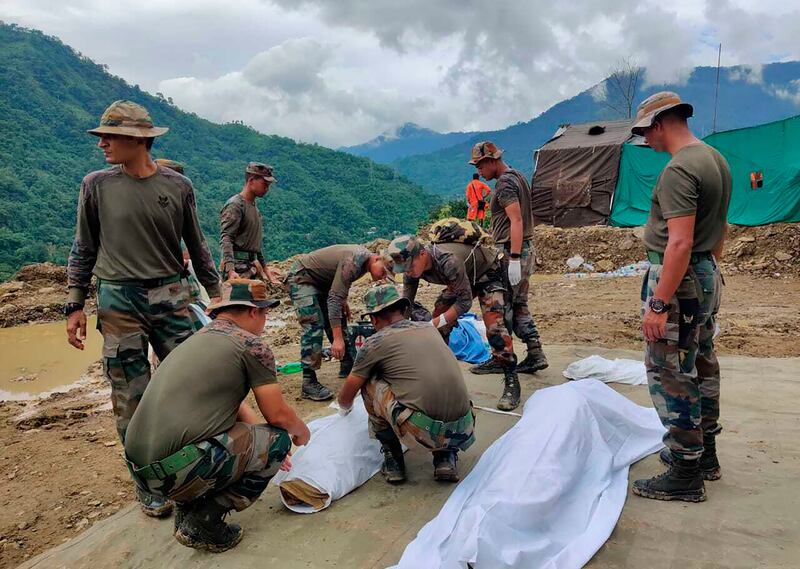Fresh rain and falling boulders on Saturday hampered rescuers who have so far pulled out 26 bodies from the debris of a mudslide that wiped out a railway construction site in India, officials said.
Rescue work is expected to continue for a couple of days in rugged hilly terrain with little hope of finding survivors among 37 people still missing since Wednesday.
Pankaj Kavidayal, a rescue official, said 21 of the confirmed 26 dead were members of the territorial army.
Army personnel had been providing security for the railway officials because of a decades-old insurgency seeking a separate homeland for ethnic and tribal groups in the area.

More than 250 soldiers, rescuers and police using bulldozers and other equipment were involved in the operation in Noney, a town near Imphal, the capital of Manipur state.
They have been cautioned about fresh mudslides reported in the region on Saturday.
Excavators were also used to search for bodies in a river.
Thirteen soldiers and five civilians have been rescued from the debris of the entirely swept away railway station, staff residential quarters and other infrastructure that was being built, Kavidayal said.
Continuous rainfall over the past three weeks has wreaked havoc across India’s northeast — eight states and 45 million people — and neighbouring Bangladesh.
An estimated 200 people have been killed in heavy downpours and mudslides in states including Assam, Manipur, Tripura and Sikkim, while 42 have died in Bangladesh since May 17th. Hundreds of thousands have been displaced.
Scientists say climate change is a factor behind the erratic, early rains that triggered unprecedented floods.
Monsoon rains in South Asia typically begin in June, but torrential rain lashed north-eastern India and Bangladesh as early as March this year.
